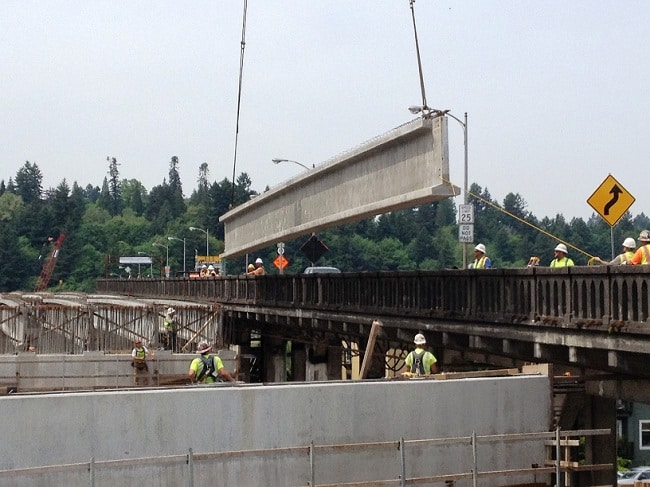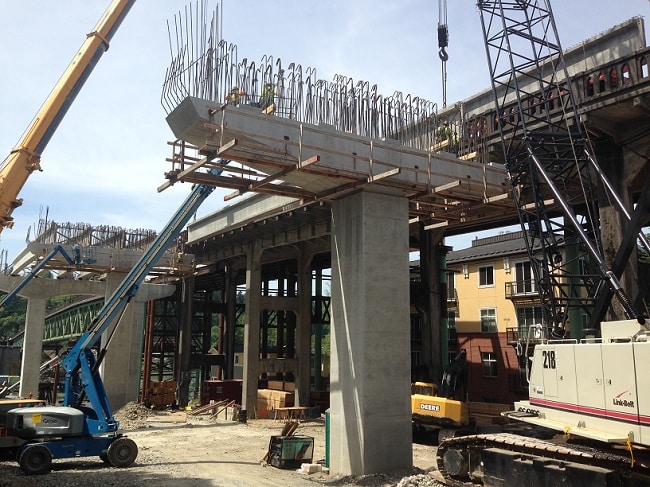
The Sellwood Bridge project in Portland, Oregon reached a major milestone last week. Sundt and joint venture partner Slayden Construction set 27 precast, pre-stressed concrete girders to support the future bridge, which will span the Willamette River and replace an old, outdated structure.
Each of the twenty girders erected between spans six through nine is approximately 105 feet long and weighs more than 37 tons. Seven, 30-foot-long slab girders (each weighing approximately 35 tons) were set over span 10, which has a different configuration than the other spans to allow the railroad tracks the pass beneath it without altering the profile of the roadway.
The bridge was closed for four days while the girders were delivered and moved into place with the help of two new cranes belonging to Sundt, along with assistance from a specialty crane subcontractor, Ness & Campbell. The bridge was reopened to traffic on Friday afternoon. (The girders for spans six through nine were set by Sundt’s Link-Belt HSL218 Crawler Crane, and the span 10 girders were set by our Link-Belt RTC8065 Hydro.)

“Planning the lifting and installation of the girders was very complex,” said Sundt Project Engineer Matt Fisher. “Crane size, crane location, ground preparation, girder delivery proximity, and girder delivery sequence were investigated well in advance, and the crane positions and movements were planned to optimize the safety and efficiency of the girder installation operation. The delivery vehicles used a specialized trailer with remote-control rear-trailer steering that allowed the driver to steer the rear of the trailer around obstacles and through difficult turns. This was especially useful when the girders traveled through the old, narrow streets of the Portland’s Sellwood District on approach to the Sellwood Bridge.”
Designed as an open steel deck arch structure, the new Sellwood Bridge will complement its surroundings while providing ample space for all modes of travel. There will be two vehicle lanes in each direction on the west end, which narrow to one lane in each direction on the east end. In addition, it will have two, six-foot-wide bike lanes and two, 12-foot-wide sidewalks. The team is using a “shoofly” (detour) approach to complete the project, in which the old bridge deck and truss was lifted with hydraulic jacks and moved to one side, then placed on a set of temporary piers and connected to temporary approach spans so traffic can continue to use it while the new bridge is constructed.
The bridge construction project is scheduled to be complete in 2016.